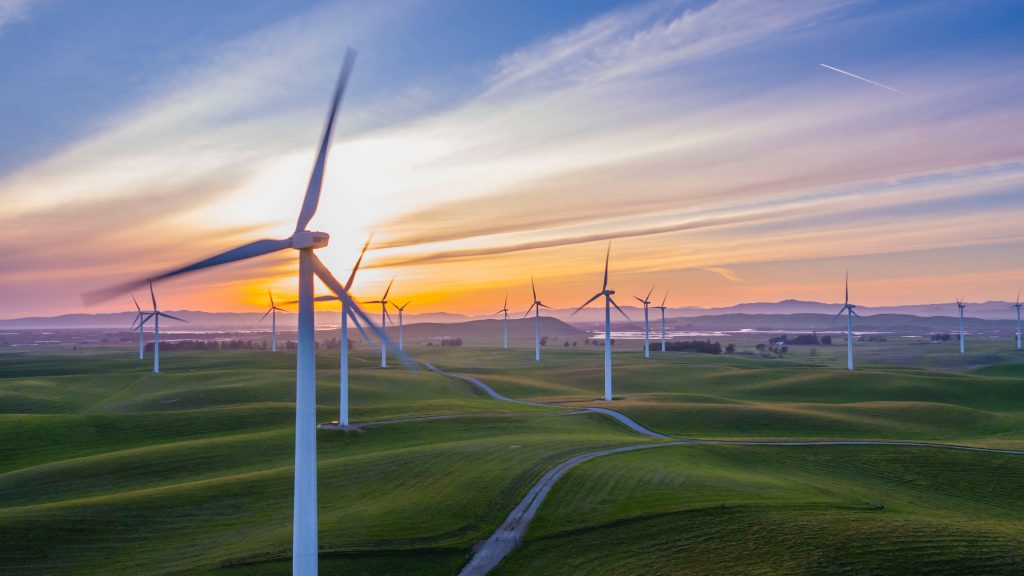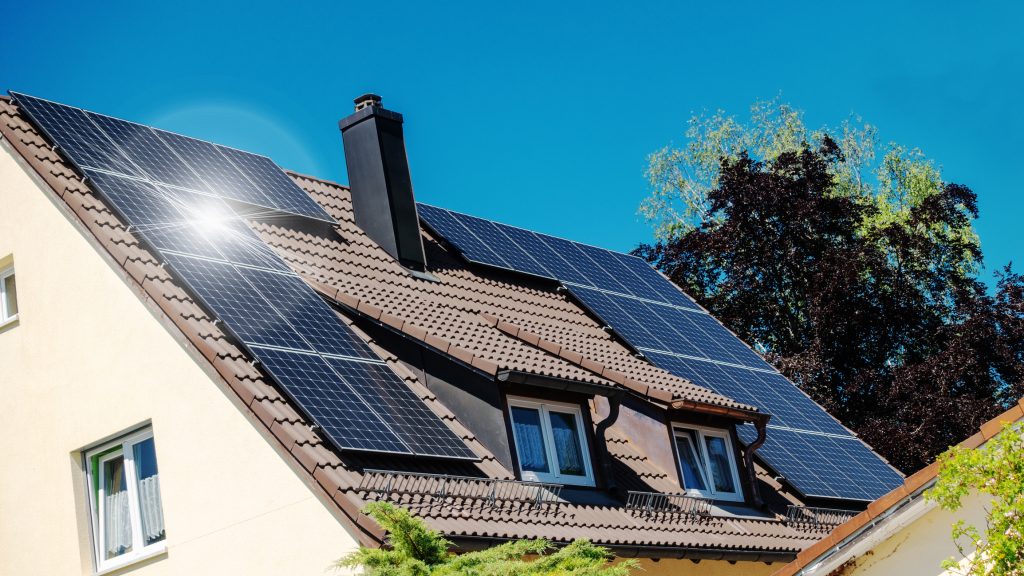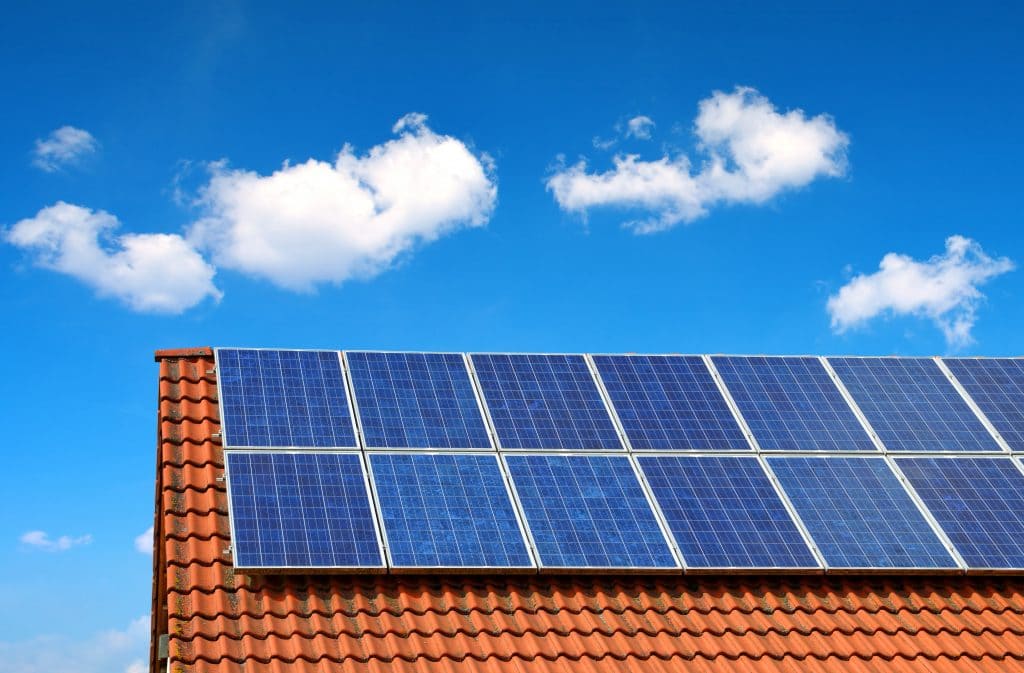Wind Turbines vs Solar Panels
In so many ways, going green is more feasible than ever. How we produce our electricity, for example, is one of those parts of life where our choices are continuing to expand. With increased innovation and the growing popularity of renewable energy, the options to go green are wider than ever. Many people don’t even have to rely on a utility or third party green energy supplier for green energy. They can instead install renewable energy directly at their home or business. This is where the debate between solar and wind energy begins.
When it comes to installing renewables for small scale production, most people’s thoughts will go first to rooftop solar energy. Indeed, the popularity of installing photovoltaic (PV) panels has skyrocketed in recent years. Today, solar panels in the US produce more than 62.5 gigawatts, which is a whopping 35 times greater than 2008 numbers. This is enough to power 12 million homes. But another renewable energy option that can be overlooked is wind power. For some people this may actually be the better alternative.
In terms of the amount of power produced, wind energy is actually a higher factor in the US’ collective energy generation than solar. In fact, today Americans consume about three times as much wind energy as solar energy. This is due mainly to the fact that it is easier to produce in larger scales. Wind farms being increasingly used by utilities and third party green energy suppliers.
Installing small scale wind turbines vs. solar PV systems at a home or business is a bit of a different story. There are key differences that may make one option better than the other for an individual home or business. But first, let’s go over what they have in common.

Common Characteristics
There are many shared advantages between wind and solar. Both, of course, are significantly better for the environment than the use of fossil fuels, especially in terms of air pollution. Both can also be produced in smaller scales to provide a certain level of energy independence; this can be especially useful to those who reside in rural areas, or who wish to be off the grid. They are also both becoming more affordable to many, with government support being a big boost. Finally, and perhaps most importantly, both are sources that we will never run out of; the sun will be shining and the wind will be blowing for a long time to come.
Shared flaws of both include that neither is completely consistent, as they both rely on the weather to some extent. While government subsidies and tax credits help, both generally have major upfront costs, even while they usually produce significant savings down the line. Neither of them have zero environmental impact. They each are produced using rare earth metals and both emit some level of pollutants while they operate. Both can also have a visual environmental impact, potentially being seen as aesthetically displeasing.
Clearly though, despite neither being a perfect solution, installing either wind or solar will have great benefits. In order to understand which is the best solution in most cases, below are some of the key differences when it comes to important aspects of their installation and production.
Production Efficiency
One of the cons of solar energy is that even the most efficient panels only convert about 22-23% of the sunlight’s energy into usable electricity. Wind turbines, on the other hand, can turn close to 50% of the wind hitting them into electricity. In terms of what this means for the actual scale of energy production, a single large wind turbine can actually produce as much electricity as 48,704 solar panels. So when it comes to turning the resource it collects into electricity, solar energy efficiency falls well behind.
Advantage: Wind Turbines
Predictability
Both wind energy and solar energy, of course, rely on the elements referred to in their names. Wind turbines will not be very productive if there is a lack of wind, and solar panels won’t produce without any sun shining down on them.
For this reason, it’s possible for a wind turbine to produce electricity all day and night, while solar panels will simply stop producing when daylight ends.
But while wind turbines have more potential to run for long periods of time; solar panels are actually overall more predictable. This is because you can easily look up the daily average of sunlight in a given location. Than decide whether to go forth with installing a solar panel array based on that.
The amount of wind and its varying speeds in a given spot. However, is much less consistent from year to year. There are so many more factors than just the past weather behavior of a location. While surrounding structures and trees can also have enough of an effect to significantly change wind speeds. For these reasons, it is much harder to predict what will come out of your wind turbine installation.
Advantage: Solar Panels
Space Requirements
Wind turbines have one major requirement that solar panels do not typically have: empty land. A turbine, unlike solar panels, cannot be installed on the roof of a home or business. Of course, for rooftop solar panel installation, the roof must be strong enough while also getting enough sunlight for the installation to be worth it.
But in general, most homes or businesses are more likely to have a solar-supporting roof than the requisite amount of cleared land for a wind turbine.
Advantage: Solar Panels

Cost
This affordability of solar and wind are both bolstered by monetary incentives that include a federal tax credit for solar (26% in 2020) and production/investment tax credits for wind. These can be used in conjunction with state incentives, which vary from state to state. Of course, the total cost of any solar or wind project will largely depend on its size, but a comparison can be made using the cost per kilowatt-hour (kWh). In terms of initial cost of installation, a 5 kW microturbine will cost about $20,000.
This is somewhat less than the cost of installing a solar panel array of 7 kW, which costs just over $23,000 and will produce about the same amount of power; though the exact amount of kWh produced depends on its location and how much sunlight it gets. The cost per kWh is, thus, nearly a tie between the two with similar ongoing savings in energy costs. However, with wind turbines typically only having a five year warranty. With much higher and more frequent maintenance costs, the total lifetime cost of solar PV systems is actually about half that of wind turbines.
Advantage: Solar Panels
Effects on Wildlife
While both wind energy and solar energy are much more environmentally friendly than traditional fossil fuel sources. Wind turbines do often come with an unfortunate side effect. Birds have been known to be killed while flying and colliding with turbines. With estimates of up to 328,000 birds killed each year in the US. Bats, too, are killed in large numbers by turbines. This is in addition to the loss of habitats and ecosystems that often comes with clearing land for large turbines. Solar panel installation, on the other hand, is not known to have any direct impact on wildlife.
Advantage: Solar Panels

Sight and Sound
Many people do not like the looks of a standard solar array on their roof. This is why many choose as an alternative the more aesthetically pleasing, though far more costly, solar shingles. However, even regular old solar panels are likely to be less of a noticeable eyesore than wind turbines, which are much larger and more obvious. Additionally, wind turbines often produce noise as they are spinning, which can be an additional nuisance to one’s surroundings. Overall, getting solar panels is much less likely to bother your neighbors’ (or your own) eyes and ears than wind turbines.
Advantage: Solar Panels
Which is Better for You?
When it comes to installing a solar panel array vs. a microturbine system, solar seems to be the clear winner with an advantage in five out of the six factors above.
This is likely why home solar PV systems are so much more popular, while wind energy is typically purchased from a utility or third party green energy supplier. However, what works for an individual home or business depends on all sorts of factors. Mainly, the right location with enough wind and land could mean that wind energy is best, especially if that location does not get much sunshine.
So despite all of solar’s advantages, before you begin to compare solar companies you should also consider whether wind is a feasible option for your home or business. While solar is likely to still be king in the coming years when it comes to small scale renewable production; rural homes and businesses in windy areas may just find that turbines are the best option for them.
